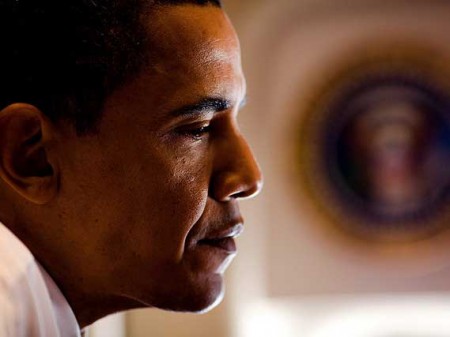
Some critics complain that US President Barack Obama campaigned on inspirational rhetoric and an ambition to “bend the arc of history,” but then turned out to be a transactional and pragmatic leader once in office. In this respect, however, Obama is hardly unique.
Many leaders change their objectives and style over the course of their careers. One of the great transformational leaders in history, Otto von Bismarck, became largely incremental and status quo-oriented after achieving the unification of Germany under Prussian direction. Likewise, Franklin Delano Roosevelt’s foreign-policy objectives and style were modest and incremental in his first presidential term, but became transformational in 1938 when he decided that Adolf Hitler represented an existential threat.
Transactional leadership is more effective in stable and predictable environments, whereas an inspirational style is more likely to appear in periods of rapid and discontinuous social and political change. The transformational objectives and inspirational style of a leader like Mahatma Gandhi in India or Nelson Mandela in South Africa can significantly influence outcomes in fluid political contexts, particularly in developing countries with weakly structured institutional constraints.
By contrast, American foreign-policy formation is highly constrained by institutions like Congress, the courts, and the constitution. Thus, we would expect less opportunity for transformational leadership.
But even the US Constitution is ambiguous about the powers of Congress and the president in foreign policy. At best, it creates what one constitutional expert called “an invitation to struggle.” Moreover, much depends on external conditions. Woodrow Wilson, Franklin Roosevelt, and Harry Truman developed transformational objectives only in response to external events after they entered office.
Crisis conditions can liberate a gifted leader from the accumulated constraints of vested interests and bureaucratic inertia that normally inhibit action in the American system. Bill Clinton, caught up in the complacent 1990’s, is said to have envied Franklin Roosevelt’s crisis conditions of the 1930’s.
In such situations, action becomes more fluid. A leader with transformational objectives faces better odds, and an inspirational style is more likely to find responsive followers and to make their role more relevant. For example, George W. Bush used the crisis conditions after September 11, 2001, in the service of an assertion of executive power, as well as to invade Iraq.
But, while turbulent times may set the stage for transformational leaders, it does not follow that bold and risk-loving leaders are always best suited to address the crises that define such periods. President George H. W. Bush, unlike his son, was transactional, but implemented a very successful foreign policy.
Whether they are transformational or incremental in their objectives, leaders need certain soft- and hard-power skills to be effective. Among the soft-power skills are emotional intelligence (self-control and the ability to use emotional cues to attract others); vision (an attractive portrait of the future that balances ideals, objectives, and capabilities); and communication (the ability to use words and symbols to persuade both an inner circle and a broader audience). For the use of hard-power resources, two skills are particularly important: organizational capacity and a Machiavellian proficiency in bullying, buying, and bargaining to form winning coalitions.
Above all, effective leadership requires contextual intelligence and an intuitive diagnostic ability that helps a leader understand change, set objectives, and align strategies and tactics accordingly. As Lee Kuan Yew, the founding father of modern Singapore, once told me, a leader must be a quick learner, test reality, be prepared to change his mind as conditions change, and act calmly in a crisis.
Contextual intelligence implies both a capability to discern trends in the face of complexity and adaptability while trying to shape events. Bismarck once referred to this skill as the ability to intuit God’s movements in history, and seize the hem of His garment as He sweeps past. More prosaically, leaders with contextual intelligence, like surfers, have the ability to judge and adjust to new waves and ride them successfully.
Leaders of this type not only adapt their style to the situation and to their followers’ needs; they also create flows of information that “educate their hunches.” This involves the ability to size up group politics and understand the positions and strengths of various stakeholders in order to decide when and how to use transactional and inspirational skills. It is the self-made part of luck.
This skill is crucial in unstructured situations, when it is often more difficult to ask the right questions than it is to get the right answers. Leaders with contextual intelligence are good at providing meaning or a road map by defining the problem that a group confronts. They understand the tension between the different values involved in an issue, and how to balance the desirable with the feasible. In particular, contextual intelligence requires an understanding of groups’ cultures; the distribution of power resources; followers’ needs and demands; information flows; and timing.
Contextual intelligence is particularly important in foreign policy, because an effective leader must understand the culture and power structure of other societies, and how they interact as an international system. With years of experience in foreign affairs, George H. W. Bush had excellent contextual intelligence. With almost no experience in foreign affairs, “W” did not. That gap proved the difference between the success of the father and the failure of the son.
Copyright Project Syndicate.
For additional reading on this topic please see:
Carving Out his Place in History
The Power of Diplomacy: US and EU Approaches
Do US Presidents Matter?
For more information on issues and events that shape our world please visit the ISN’s Weekly Dossiers and Security Watch.

